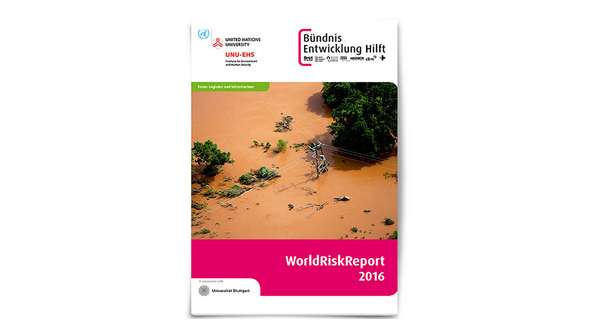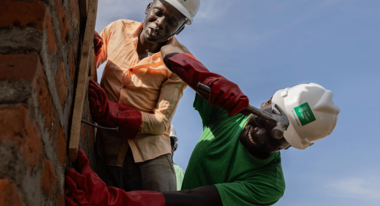World Risk Report 2016
When does a natural event develop into a disaster? The WorldRiskReport 2016 focuses on challenges in logistics and infrastructure.
Nature cannot be controlled. Humans can only influence to a limited degree whether, and with what intensity, natural events are to occur. But they can take precautions to help prevent a natural event from becoming a disaster. It is this vulnerability of a society that forms the basis for the WorldRiskIndex, which calculates the disaster risk for 171 countries by multiplying vulnerability with exposure to natural hazards.
This risk is especially high wherever natural events hit vulnerable societies. While a low level of vulnerability is not a guaranteed protection against disasters, it can reduce the risk. This year's WorldRiskReport takes a closer look at the role of logistics and infrastructure.
WorldRiskIndex
The World Risk Index is based on 4 key questions:
- How likely is an extreme natural event and will it affect people?
- How vulnerable are people as a result of the natural hazards?
- To what extent can societies cope with acute disasters?
- Is the society taking precautionary measures against natural hazards expected in the future?
Global risk hotspots are Oceania, Southeast Asia, Central America and in the southern Sahel.
WorldRiskReport 2016 – focus: logistics and infrastructure
Dilapidated transport routes, unsafe power grids, buildings in a state of disrepair: During extreme natural events, a fragile infrastructure can have grave consequences for the local population, for whom it represents a direct threat. In addition, it delays the effective potential for those affected to help themselves and impedes humanitarian relief provided by the local authorities or from abroad.
Usually, the challenges that relief agencies face are on the “last mile” of the logistics chain: Organizing transportation despite ruined roads or bridges, and ensuring fair distribution when, for example, there is a scarcity of water, food and shelter. With its focal topic, the WorldRiskReport 2016 shows the way in which logistics and infrastructure play a crucial role in determining whether an extreme natural event turns into a disaster.
When key infrastructure, such as transport networks or healthcare, is devastated by natural forces, the threat of a humanitarian disaster arises. In this case, a quick response is needed to ensure that people can provide themselves with the bare necessities. This is where information technology like the Internet or mobile phones as well as more recent technology such as drones or 3D printers, can support humanitarian logistics – that is, if they have not been impaired by a collapsed local power supply.
But technology-based solutions aside, there still remains a host of challenges: examples include supporting self-empowerment measures, coordinating the involved actors, making use of local resources, and the controversial issue of cooperations with the private sector and armed forces.








